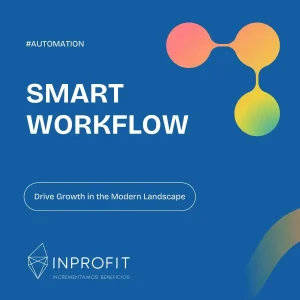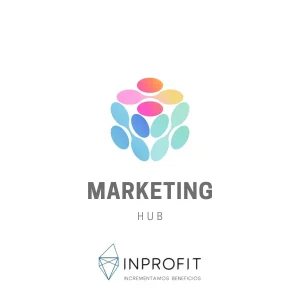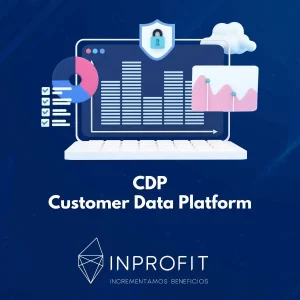The fusion of creativity and strategy enables companies to navigate the complexities of consumer behavior, technological advances and competitive markets.
As we move into the 21st century, the importance of innovative brand strategies becomes increasingly apparent, highlighting the need for brands to adapt and thrive in a digitally dominated world.
This blog aims to explore the trajectory of creative marketing and its profound impact on brand strategies. By examining past and present marketing innovations, we can foresee the trends that are about to reshape the future of brands. From the explosion of digital platforms to the integration of cutting-edge technologies, this journey through creative marketing will uncover strategies brands can employ to stay relevant and foster meaningful connections with their audience.
To discover the future, it is crucial to understand the evolution of marketing practices, the emerging trends on the horizon and the challenges and opportunities they present.
We want to offer a global vision, with ideas and predictions that will equip companies and marketers with the knowledge they need to develop attractive, future-proof brand strategies.
Table of Contents
ToggleEvolution of creative marketing
The creative marketing journey is a story of adaptation, innovation and the constant search for meaningful consumer engagement. From the traditional billboards and print ads of the early 20th century to the dynamic digital campaigns of today, the evolution of marketing strategies reflects broader social, technological and economic changes.
Marketing from 0
In its early days, marketing focused primarily on visibility and reach. Companies used newspapers, brochures, billboards and radio ads to capture the attention of a wide audience. Messages were direct and emphasized product features and benefits, with little emphasis on creativity or consumer engagement. This era was defined by the challenge of reaching as many potential customers as possible, and creativity played second fiddle to visibility.
The role of technology in creative marketing
The advent of television in the mid-20th century ushered in a new era of creative marketing. Brands could now use images and sound to tell more compelling stories, leading to the emergence of memorable jingles and mascots. However, it was the rise of the Internet and digital technology that really transformed the landscape.
The digital revolution allowed marketers to target audiences with greater precision, measure the effectiveness of campaigns in real time and engage directly with consumers through social media.
Impact of social media and digital platforms
Social networks have democratized content creation, allowing brands to engage with consumers in a more personal and interactive way. Platforms such as Facebook, Instagram, Twitter and YouTube have given rise to influencer marketing, user-generated content and viral campaigns. These tools have not only expanded the creative possibilities for marketers, but have also increased the importance of authenticity and consumer engagement in marketing strategies.
Digital platforms have also facilitated the use of data analytics, enabling brands to understand consumer behavior, preferences and trends at an unprecedented level. This shift to data-driven marketing has enabled more personalized and targeted campaigns, significantly increasing the effectiveness of marketing efforts.
The evolution of creative marketing is a testament to the industry’s ability to adapt to changes in consumer behavior, technological advances and the media landscape. Looking ahead, the lessons of the past remind us that the foundation of marketing success lies in the ability to tell compelling stories, foster emotional connections and continually innovate to meet changing consumer needs and preferences.
Emerging trends in creative marketing
As the digital landscape continues to evolve, so do the strategies employed by marketers to capture attention, engage audiences and build lasting relationships with consumers.
The future of creative marketing is marked by several key trends that leverage technology, personalization and a more conscious approach to consumer interaction. Below, we explore these trends and their potential to redefine the relationship between brands and their customers.
Personalization and data-driven marketing
The era of one-size-fits-all marketing is giving way to a more personalized approach, where messages are tailored to individual consumer preferences, behaviors and needs. Advances in AI and machine learning have made it possible to analyze vast amounts of data, allowing marketers to segment their audiences with unprecedented precision and tailor their messages accordingly.
This level of personalization enhances the consumer experience, making interactions with the brand more relevant and engaging.
Augmented Reality (AR) and Virtual Reality (VR) in Marketing
AR and VR technologies are transforming the way brands interact with their audiences, offering immersive experiences that were once the stuff of science fiction.
AR allows consumers to visualize products in their own environment before buying them, as seen in IKEA’s app that places furniture in your room via your smartphone’s camera.
VR goes one step further and creates fully immersive environments for storytelling or product exploration. These technologies not only captivate consumers’ imaginations, but also provide them with valuable information and experiences, deepening their engagement with the brand.
The rise of partnerships between content creators and influencers
The democratization of content creation, facilitated by social media platforms, has given rise to influencer marketing as a powerful tool to reach target audiences and capture their attention.
Influencers and content creators, with their loyal followings and niche appeal, offer brands a way to humanize their messaging and leverage pre-existing communities. Collaborations with these influencers allow brands to create authentic narratives that resonate with specific audience segments, thereby enhancing brand visibility and credibility.
Sustainability and ethical marketing
Increasingly, consumers are looking to support brands that align with their values, especially when it comes to environmental sustainability and social responsibility. This shift has led to the rise of ethical marketing, with brands focusing on transparency, sustainability and positive social impact as key components of their messages and operations.
Marketing campaigns that highlight a brand’s commitment to these values can foster a deeper connection with consumers, especially among younger demographics who prioritize ethical considerations in their purchasing decisions.
Brand storytelling and emotional connection
At the heart of marketing success lies the power of storytelling. Brand storytelling goes beyond mere advertising; it is about crafting narratives that resonate on a personal level, connecting with the values, emotions and aspirations of the audience.
This approach is increasingly important in the digital age, where consumers are bombarded with countless messages on a daily basis. Brands that master storytelling can cut through the noise and foster a deep emotional connection with their audience.
The importance of storytelling in branding
Storytelling turns a brand from a mere supplier of goods or services into a character in the customer’s life. This narrative approach helps to humanize the brand, making it more relatable and memorable.
Effective storytelling can turn abstract features and benefits into tangible experiences, making the brand’s value proposition clear and compelling. It is about weaving a narrative that fits the identity or aspirations of the audience, making the brand an integral part of their personal or aspirational story.
Strategies to create emotional connections
To create an emotional connection, it’s not enough to tell a story; you have to tell the right story in a way that matches the audience’s values and experiences. The key strategies are as follows
- Authenticity: Genuine stories that reflect the brand’s values and mission resonate more deeply than contrived narratives. Authenticity fosters trust and loyalty, essential components of a strong brand-consumer relationship.
- Relatability: Stories that reflect common human experiences or challenges invite the audience to see themselves reflected in the narrative, which reinforces their connection to the brand.
- Engagement: Interactive storytelling elements, such as user-generated content or immersive experiences, can increase audience engagement by making them active participants in the narrative.
- Emotional triggers: Using emotions such as happiness, nostalgia or even sadness can make stories more impactful, leaving a lasting impression on the audience.
Successful case studies
Several brands have excelled at storytelling, creating campaigns that resonate deeply with their audiences:
- Patagonia: Through its focus on environmental sustainability and ethical manufacturing, Patagonia tells a powerful story that aligns with the values of its customer base, fostering a strong sense of community and loyalty.
- Airbnb: Airbnb’s “Belong Anywhere” campaign focuses on stories of connection and belonging, transforming the concept of travel accommodation into a narrative about human connection and understanding across cultures.
- Nike: Nike’s narrative often focuses on overcoming adversity, ambition and the power of sport to bring out the best in people, resonating with a broad audience and reinforcing its brand identity.
Leveraging technology for creative marketing
The digital age has ushered in a new era in which technology is not just an enabler, but a catalyst for creative marketing. Innovations in artificial intelligence (AI), machine learning, big data and analytics are transforming the landscape, giving marketers unprecedented tools to understand, engage and delight their audiences.
By leveraging these technologies, brands can create more personalized, interactive and impactful marketing strategies that resonate deeply with consumers.
AI and machine learning
AI and machine learning have revolutionized content creation and customer interactions, enabling brands to deliver highly personalized experiences at scale.
These technologies can analyze consumer data and behavior patterns to predict preferences and tailor content, recommendations and messages to suit individual interests and needs. AI-powered chatbots and virtual assistants provide personalized, real-time customer service, enhancing the customer experience and fostering customer loyalty.
In addition, AI-based tools can generate creative content, from writing product descriptions to creating social media posts, freeing marketers to focus on strategy and creativity.
This symbiosis of AI and human creativity enables brands to produce relevant, high-quality content more efficiently, meeting the demands of today’s fast-paced digital environment.
The use of big data and analytics
Big data and analytics play a crucial role in creative marketing by providing deep insights into consumer behavior, preferences and trends. By analyzing large data sets, marketers can identify patterns and insights that inform strategy, from product development to personalized marketing campaigns.
This data-driven approach enables brands to anticipate consumer needs, optimize their marketing efforts for greater ROI and stay ahead of market trends.
Analytics tools also measure the effectiveness of marketing campaigns in real time, allowing for on-the-fly adjustments and optimizations. This agility is crucial in a digital landscape where consumer preferences and behaviors can change rapidly.
The future of automated and programmatic advertising
Automated and programmatic advertising represents the future of digital marketing, as it allows for more efficient and targeted ad placement. By using algorithms to buy ad space in real time, brands can reach the right audience at the right time, maximizing impact and efficiency.
This technological approach not only reduces waste, but also enables highly personalized advertising, further improving the relevance and effectiveness of marketing messages.
Challenges and considerations
As the creative marketing landscape evolves, driven by technological advances and changing consumer expectations, brands and marketers face a multitude of challenges and considerations.
Navigating these complexities is crucial to maintaining the integrity, relevance and effectiveness of marketing strategies. This section explores the main obstacles and ethical considerations that play a key role in the future of creative marketing.
Digital privacy and data protection challenges
One of the most important challenges in today’s digital marketing landscape is managing consumer privacy and complying with data protection laws.
With the increasing reliance on personal data for targeted marketing, brands must navigate the tightrope between personalization and privacy. Regulations such as the General Data Protection Regulation (GDPR) in Europe and various state laws in the United States require strict compliance, ensuring that consumer data is handled responsibly.
Marketers must be transparent about data collection practices, ensure explicit consent, and provide clear options for consumers to control their data, which complicates targeted and personalized marketing efforts, but ensures consumer trust and legal compliance.
Rapidly evolving technology and trends
The pace of technological change poses another major challenge. Tools and platforms that are essential today may be obsolete tomorrow, forcing marketers to continually learn and adapt.
This constant evolution requires not only a financial investment in new technologies, but also a commitment to continuous training and flexibility in strategy.
Brands that do not keep up with the times run the risk of falling behind their competitors, who are more effectively leveraging new tools and trends to engage consumers.
Balancing creativity with analytical decision making
The increasing reliance on data and analytics to make marketing decisions poses the challenge of balancing creativity with analytical decision making. While data can provide valuable insights into consumer behavior and campaign performance, there is a risk that over-reliance on analytics will stifle creativity.
Marketers must find ways to harness the power of data without losing the art of storytelling and creative expression that connects with audiences on an emotional level.
The future of branding strategies
On the threshold of a new marketing era, the future of brand strategies is marked by the confluence of technology, consumer expectations and social values. Brands able to navigate this complex landscape with agility, foresight and authenticity are poised to thrive.
Tomorrow’s strategies will not only leverage technological advances, but will also resonate with consumers on a deeper, more personal level, emphasizing authenticity, engagement and value alignment.
Personalization: Adapting brand strategies to consumers’ expectations
In the digital age, consumers are more informed, connected and demanding than ever before. They expect brands not only to offer high-quality products and services, but also to stand for something bigger.
This shift requires an evolution towards purpose-driven branding, in which companies articulate and live by a set of values that align with those of their target audience.
Brands that can effectively communicate their purpose, demonstrate social responsibility and engage meaningfully with their communities will win the hearts and minds of consumers.
In addition, the demand for personalized experiences continues to increase, pushing brands to use data and technology creatively to meet individual preferences and needs.
Personalization, when done ethically and carefully, can significantly increase brand loyalty and customer satisfaction.
Predictions for the next big shift in creative marketing and branding
Looking ahead, the integration of emerging technologies such as AI, AR and VR will offer new avenues for creative brand storytelling and immersive customer experiences. These technologies will enable brands to create highly personalized and engaging content, fostering a deeper emotional connection with their audience.
Moreover, as the global debate on sustainability and ethical practices intensifies, brands that prioritize these issues in their marketing and operational strategies will differentiate themselves from others.
The future of brands lies in creating a cohesive and authentic narrative that not only highlights the product or service, but also reflects the brand’s commitment to a positive impact on society.














